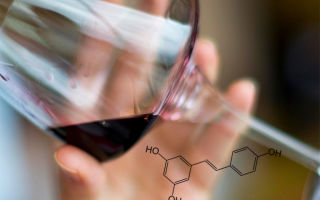Content
The effect on the body of sulfur dioxide in wine can be harmful under certain circumstances. Due to its antioxidant and antimicrobial properties, a chemical additive is used as a preservative. In the composition of alcoholic beverages, the component is labeled as E220.
What is sulfur dioxide
Sulfur dioxide, or sulfuric anhydride, is a chemical additive widely used in winemaking. It is a gaseous substance with a repulsive odor. Sulfur dioxide is added to the composition of wine at every stage of its preparation, including the collection of berries and the fermentation process. In the food industry, E220 acts as a preservative.
According to the degree of toxicity, the substance is classified as class 3. It is considered potentially hazardous to human health. Sulfuric anhydride is highly soluble in alcohol and water. If it gets on the mucous membranes, the substance provokes an allergic reaction. Inhalation of sulfur dioxide is fraught with pulmonary edema.
In the food industry, sulfur dioxide is used to process fruits and vegetables. It extends their shelf life without adversely affecting taste. Sulfuric anhydride is also present in a minimal amount in wine. It prevents the fermentation process and the formation of acetic acid. At the same time, sulfuric anhydride prolongs the shelf life of the drink and improves its taste. Preservation of wine with sulfur dioxide is a mandatory manipulation in production.

Why add sulfur dioxide to wine
The preservative E220 performs important functions in wine. It normalizes the microflora of the wort, preventing the multiplication of pathogenic microorganisms. The substance can enter the wine both naturally, there and during the fermentation stage. The fact is that it penetrates into the berries through the soil. Especially if the vineyard is located near volcanoes. In addition, E220 is additionally added directly to the shop. The preservative helps to increase the shelf life and improve the quality of the alcoholic beverage. Additional functions of the E220 food additive in wine include the following:
- disinfection of equipment and premises in the production of wine;
- stabilization of the color of the drink;
- preventing the multiplication of pathogens;
- enhancing the sweetness of the drink;
- maintenance of oxidative processes.
Excess sulfuric anhydride is removed from the drink due to the high temperatures from 90 to 110 ° C. The next step, the wine is passed through an inert gas. After that, the alcohol is bottled and corked. In the red form, sulfur dioxide is present in smaller quantities. This is due to the content of tannin in it, which partially takes over the functions of a preservative.
If the wine is of poor quality, and the sulfur dioxide content is exceeded, a characteristic repulsive smell will be present. It is impossible not to notice it. Therefore, to assess the quality of a drink, sommeliers not only look at its color and texture, but also analyze the smell.
Is sulfur dioxide in wine harmful?
In the amount in which sulfur dioxide is present in wine, it is not capable of harming health. The removal of the substance from the body is carried out by the genitourinary system. Side effects can occur only with excessive consumption of the drink and the presence of contraindications. Much also depends on the individual characteristics of the organism. In addition, it must be borne in mind that ethyl alcohol itself is no less dangerous to health.
It is believed that with low stomach acidity, the likelihood of encountering the side effects of wine increases. The World Health Organization has established the recommended dosage of a potentially hazardous substance - 0.7 mg per 1 kg of body weight.
With moderate poisoning, the following symptoms may appear:
- impaired speech function;
- increased heart rate;
- headache;
- cough;
- nausea and vomiting.
When it comes to severe, toxic poisoning, the symptoms can be very dangerous to health. The most common harmful effects of sulfur dioxide consumption include:
- leaching of B vitamins from the body, followed by metabolic disturbances;
- swelling of the lungs;
- allergic reaction;
- upset digestion.
Sulfuric anhydride is especially dangerous for people with asthma and kidney disease. It is also prohibited for use by lactating and pregnant women. Alcoholic beverages can have a negative impact on the development of your baby's vital organs.
In case of an allergic reaction, drinking an alcoholic beverage causes difficulty in swallowing due to swelling of the mucous membrane of the mouth and throat. Additionally, vomiting and wheezing may occur. But most often, wine allergy is accompanied by horse rashes and itching. These symptoms are relieved by antihistamines.

Sometimes unwanted symptoms are not associated with the ingestion of sulfur dioxide into the body. In some cases, they are triggered by ethyl alcohol poisoning. The process of its breakdown is accompanied by the release of toxins that cause migraines and nausea.
Sulfur dioxide in wine
Sulfur dioxide is included in the composition of wine in a certain amount. There are generally accepted norms for each type of drink. They may vary depending on the country of manufacture. In the United States, the limit for sulfur dioxide in wine is 400 mg / l. In European countries, it does not exceed 300 mg / l. In Russia, the rate is set at 300 g / ml. At the same time, more sulfuric anhydride can be found in semi-dry wine than in semi-sweet.
How to remove sulfur dioxide from wine
People who have learned about the harmful effects of sulfur dioxide on the body seek to reduce its content in the drink. It is impossible to completely get rid of the substance. It is even presented in homemade wine. To reduce the concentration of sulfur dioxide in a drink, you need to pour it into a glass and let it stand for a while.
Another way to reduce the concentration of the preservative is to dilute the drink with water. But in this case, its taste is reduced. Sommeliers often practice pouring wine from one glass to another. This manipulation preserves the taste of the drink, but helps to eliminate sulfur dioxide. You can also initially choose those brands of wine that contain the minimum dosage of the substance.
When choosing a wine, experts recommend paying attention to dry varieties. They contain less preservatives. It is advisable that the bottle is sealed with a wooden stopper, as it absorbs some of the chemicals. It is equally important to buy alcohol from trusted sources from reputable producers.
Sulfur Dioxide Free Wine Grades
It is almost impossible to find red wine without sulfur dioxide. After all, a high-quality stabilizer that could fully replace the substance has not yet been found.Even if the substance was not added during the production of the beverage, it will be present in the raw material. In this case, its content ranges from 5 to 15 mg / l. On the packaging of these wines, you can find the mark "bio". The most popular brands without synthetic sulfur dioxide include: Kalleske, Magma Rosso, Zind-Humbrecht, Jacques Selosse, Emidio Pepe, Gravner.
Sometimes the choice is made in favor of a wine with a low sulfur dioxide content in order to reduce headaches in the morning after drinking. In fact, this is not practical. A person's well-being the next day does not depend in any way on the concentration of this substance. It is influenced by the full composition, the quality of the brand and the amount drunk.
Conclusion
The effect of sulfur dioxide in wine on the body is ambiguous. When consumed in moderation, wine with its content is not harmful to health. Side effects occur only when the dosage is violated and the recommendations of specialists are neglected.

